The Reiki Digest for July 8, 2006: A Celebration of Nonlocality
Welcome to the second edition of The Reiki Digest!
If you're reading this by e-mail or RSS syndication, thanks for subscribing. If you'd like to subscribe, just send an e-mail to editor@thereikidigest.com with the word SUBSCRIBE in the subject line.
If you're reading this on The Reiki Digest web site, you get not only the text but the graphics, including ads that have been carefully chosen for people interested in Reiki, ads that help keep this publication free of charge. If you find an ad here that seems inappropriate, please alert us by writing to editor@thereikidigest.com and we'll filter it out. Web site readers also get to read the comments, and contribute to them. For example, Reiki Master Teacher Karen J. Gordon in Eugene, Oregon, has posted her own review of the Pamela Miles book, Reiki: A Comprehensive Guide, as a comment to the review I published here last week. All readers are invited to contribute to the discussion, even readers who aren't Reiki practitioners but might have a question about Reiki.
A Celebration of Nonlocality
In this edition, we'll travel through space and time as we consider a concept that puzzled Albert Einstein himself and still boggles minds today, a concept that is one of the pillars of Reiki: nonlocality. In Reiki, practitioners at the Second Degree level or above learn how to send Reiki across space and time, though we also learn to use discretion in talking about distance healing, since non-practitioners tend to raise eyebrows at the very notion. Those unfamiliar with the concept of nonlocality tend to dismiss it, and in the process dismiss Reiki and its practitioners as well.
Our first stop in the exploration of nonlocality is the year 1935, when physicists Albert Einstein, Boris Podolsky and Nathan Rosen introduced the EPR Paradox in a paper intended to prove that the description of reality in quantum mechanics was incomplete, since it seemed that according to quantum theory, a measurement performed on one subatomic particle could have an immediate effect on another, regardless of the distance between them. Subsequent experiments, however, confirmed the phenomenon of nonlocality, proving the non-local effect despite Einstein and colleagues' disbelief. Nonlocality is also known as quantum entanglement, or, in Einstein's words, "spooky action at a distance."
No matter where you are right now, no matter what time it is, your eyes may already have glazed over at all that quantum physics. Don't worry, you don't have to go back to school or even read all those links. Just remember, the next time you encounter someone who's skeptical about the use of Reiki at a distance, let that person know that Einstein found it confusing, too. And if you do want to learn more about it, there's a new book, The God Effect, by Brian Clegg, that explains it all in nonscientific language:
Our next stop is present-day Sydney, Australia, where Reiki Master Teachers Frans and Bronwen Stiene at the International House of Reiki have done at least two things I'd like to do someday: they've studied Reiki in Japan as well as the West, and they're offering a weekly Reiki podcast. This week's program takes us all the way to England for an interview with British Reiki Master Angie Buxton-King, the first person to bring Reiki and other energy healing into the hospitals of the United Kingdom's National Health Service, and author of the book The NHS Healer. The sound quality isn't the greatest, and I had to listen to the interview three times to make sure I heard it all, but if you have time, it's very interesting. Buxton-King explains what works, and what doesn't work, in the hospital setting. For example, while it's best to avoid off-the-body Reiki (too "airy-fairy"), it's sometimes difficult to work around IV tubes and respirators, so Reiki without touch can come in handy.
Next stop: Cleveland, Ohio, USA, where The Cleveland Plain Dealer interviews Reiki Master Wendy Langenderfer for an article headlined Lessening the Pain of Cancer: "Studies show that such care alleviates physical and emotional pain. At the Center for Body, Mind & Spirit, participants charted their pain and stress after meditation, drumming and Reiki. In all three cases, more than 90 percent of the participants reported improvement."
On to Pennsylvania, where the Philadelphia Inquirer turned its attention to Reiki on July 3 with a feature headlined "Good energy for bad: Reiki, a Japanese practice of clearing away negative energy, is finding acceptance in U.S. medicine." Reiki-practicing physician William DeMedio gives reporter Dawn Fallik a demonstration, removing his stethoscope and white coat for the session.
Also in Pennsylvania, the Doylestown Patriot takes us to Serenity House, a hospice where Reiki and other modalities help the terminally ill and their caregivers.
In Stamford, Connecticut, Reiki is helping recovering cancer patients; cancer survivors in Waltham, Massachusetts, also find Reiki helps with stress.
In southern Maryland, horses are getting Reiki. In Burlington, Vermont, nuns of the Sisters of Mercy are teaching Reiki.
In Naples, Florida, the Sun-Times has a columnist who is, among other things, a Reiki Master.
And back in the UK, Greenwich resident and Reiki recipient Kevin Marques is celebrating the 20 years he's lived with HIV.
Celeb-Reiki
This week's Celeb-Reiki section also includes global travel: Singaporean actress/model Jojo Struys is hosting a television series on wellness that will include Reiki, according to The Star newspaper in Malaysia. And in India, Israeli actor/director/musician Gil Alon tells an interviewer that he learned Reiki "for myself, not for healing others."
Stay tuned for another edition next week, and please don't be shy about commenting on this or any other post.











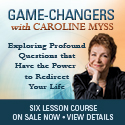






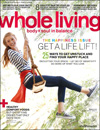
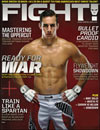

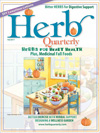
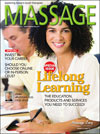
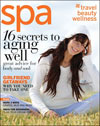
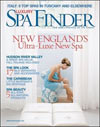
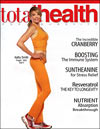






0 Comments:
Post a Comment
<< Home